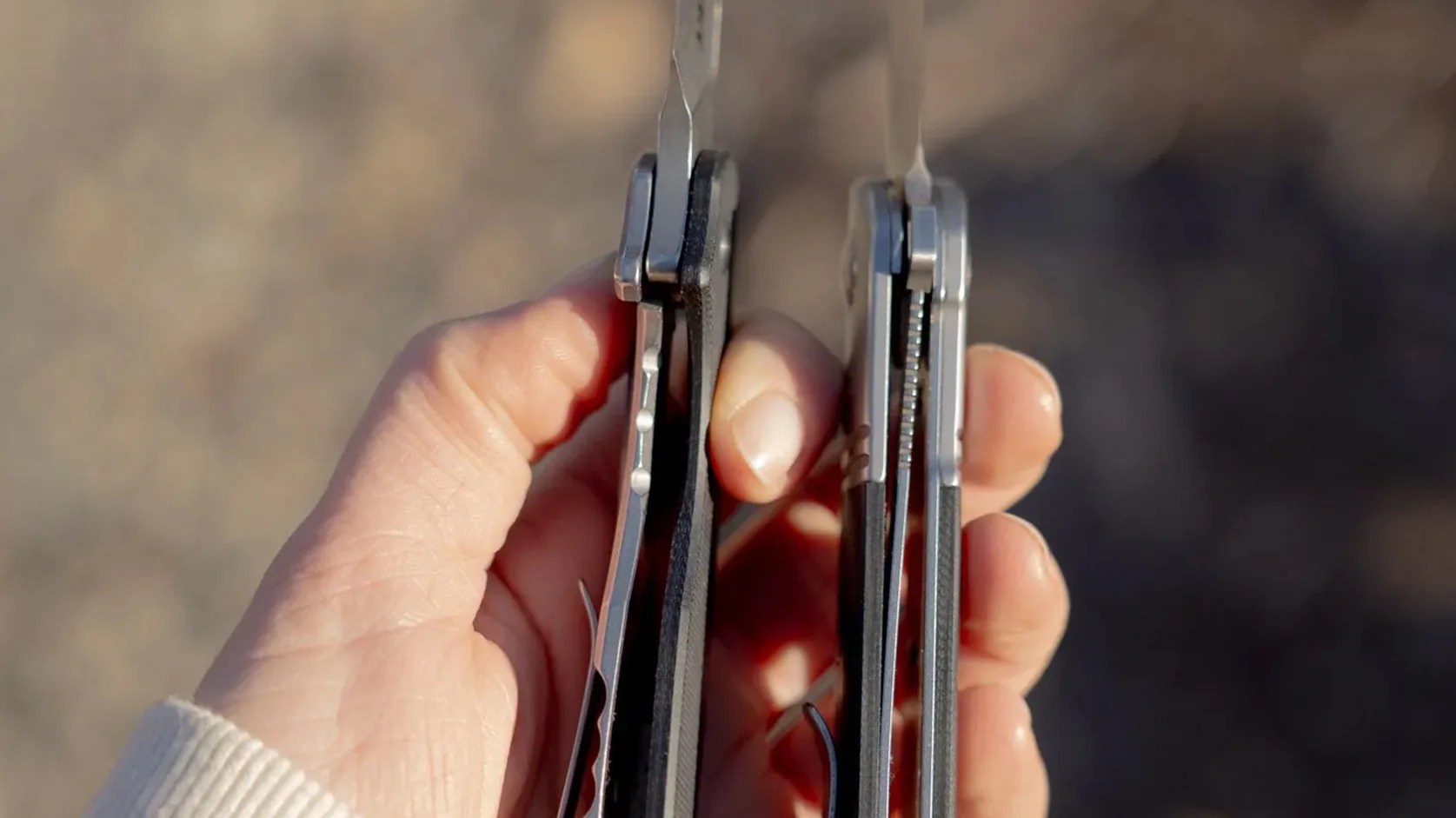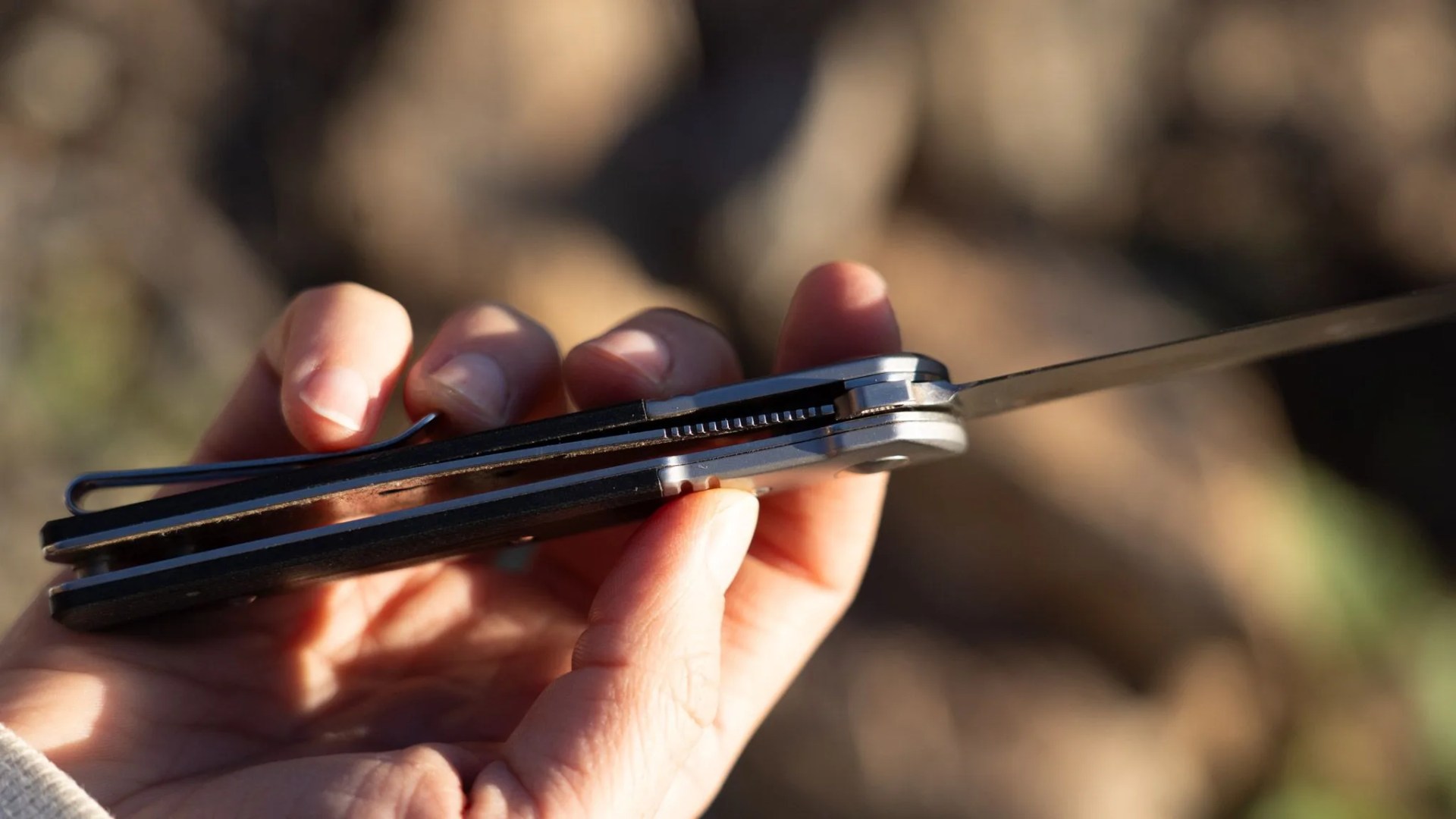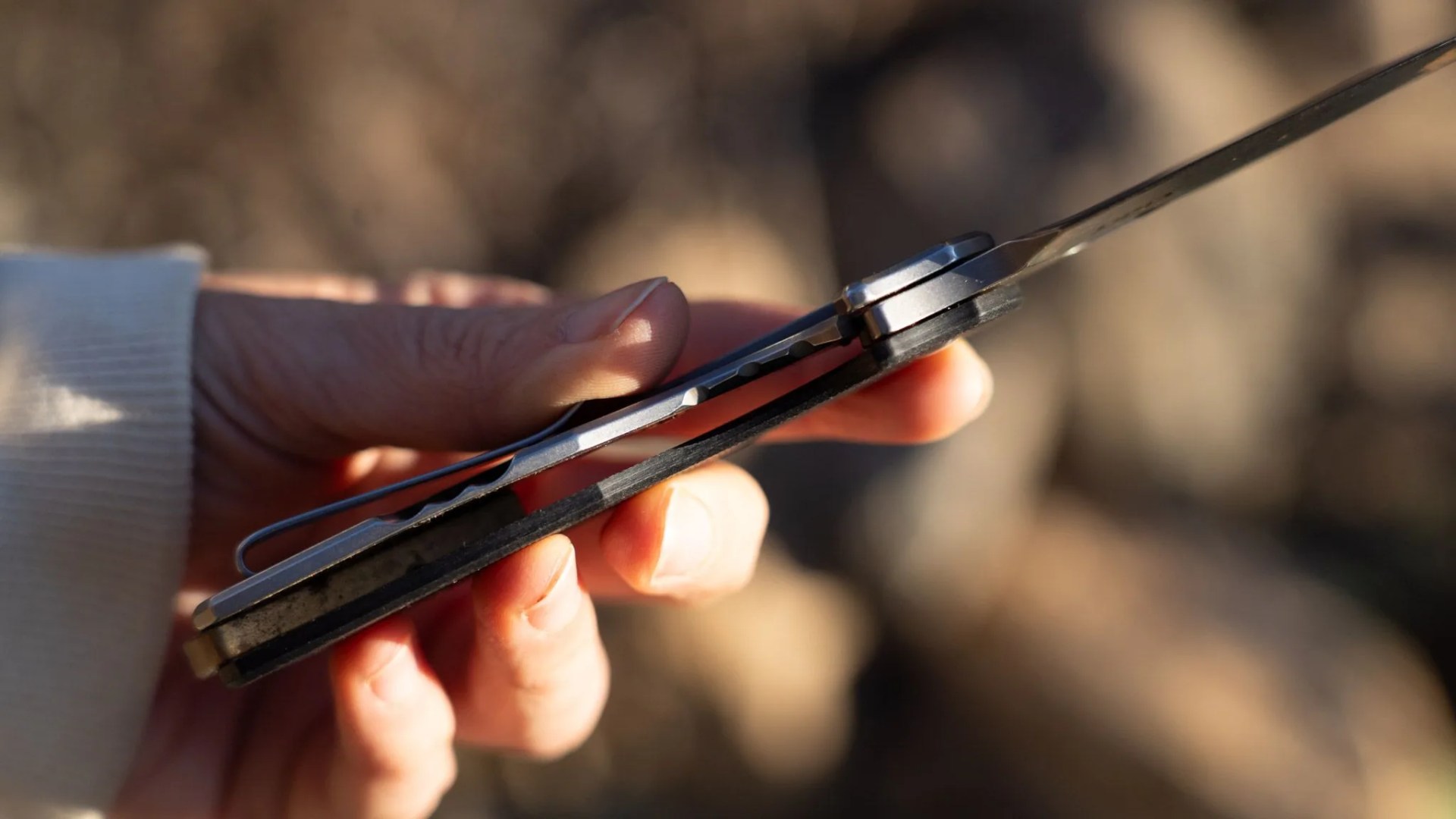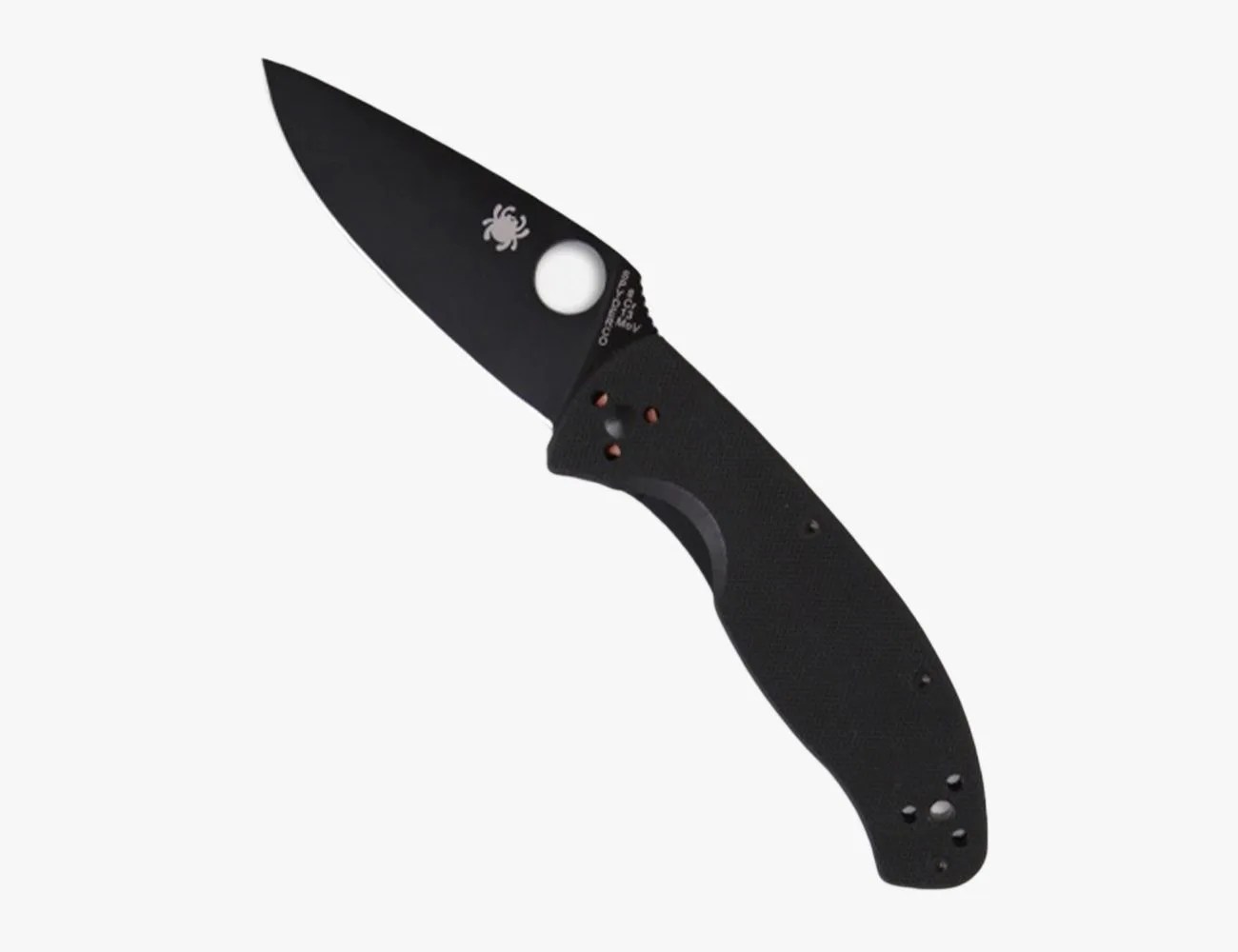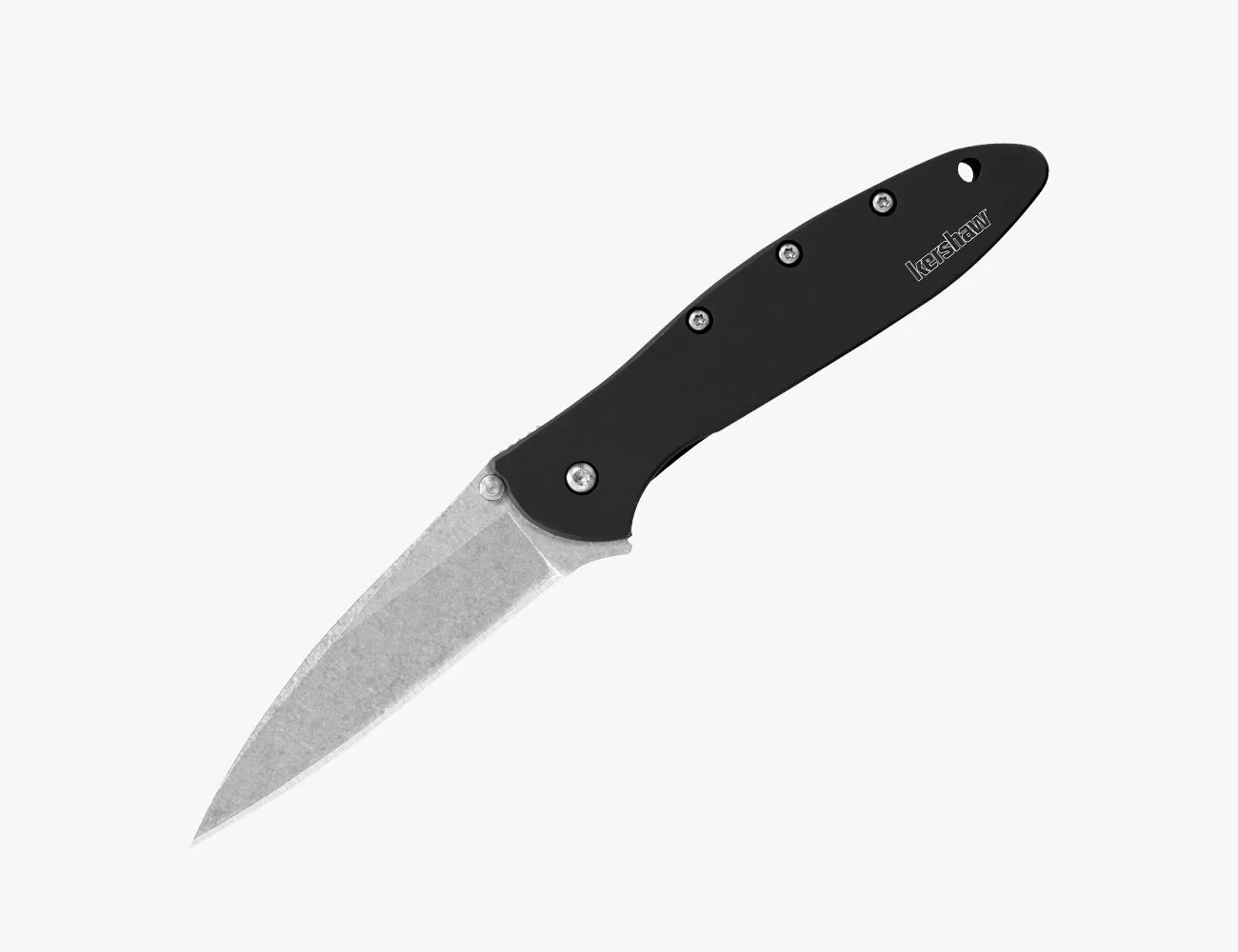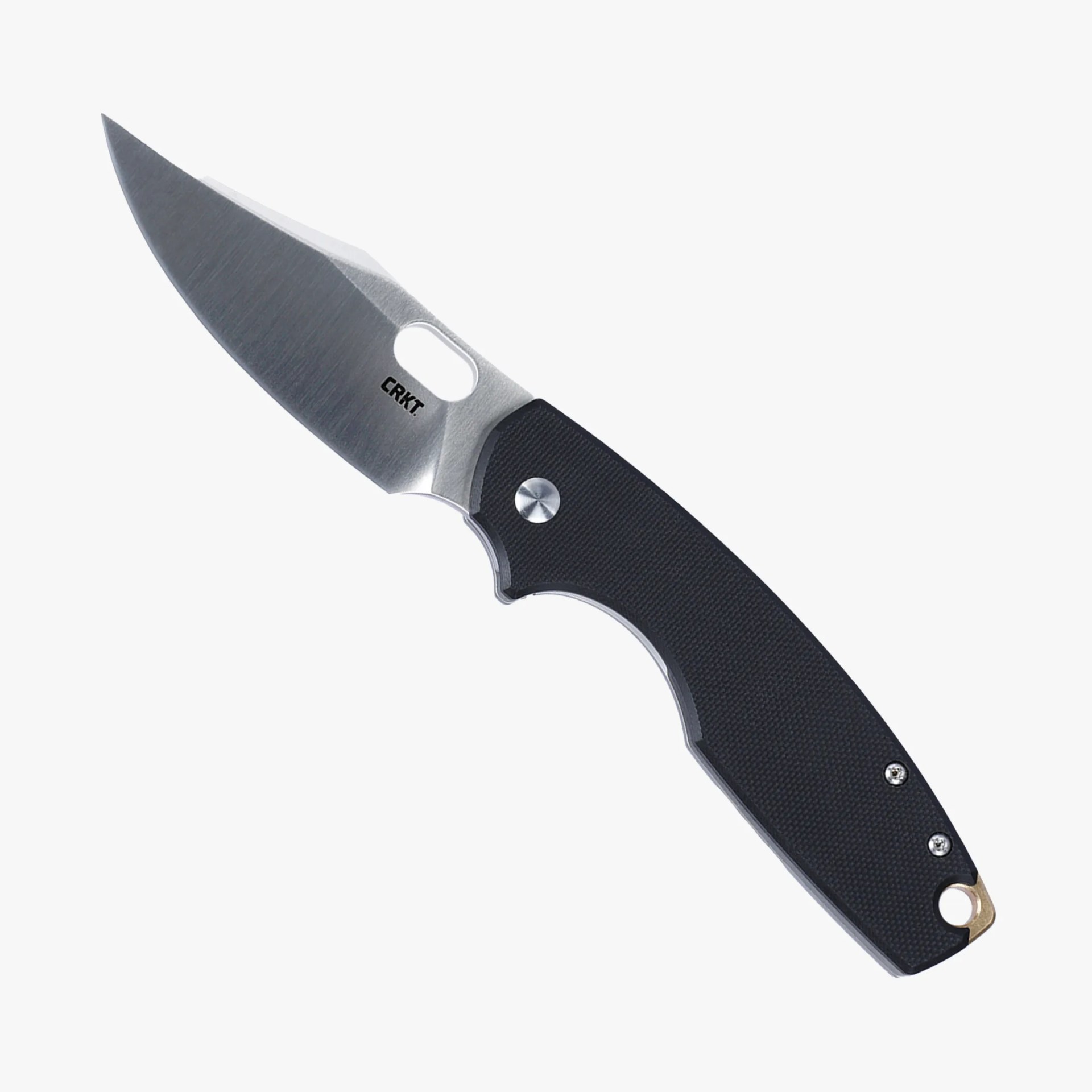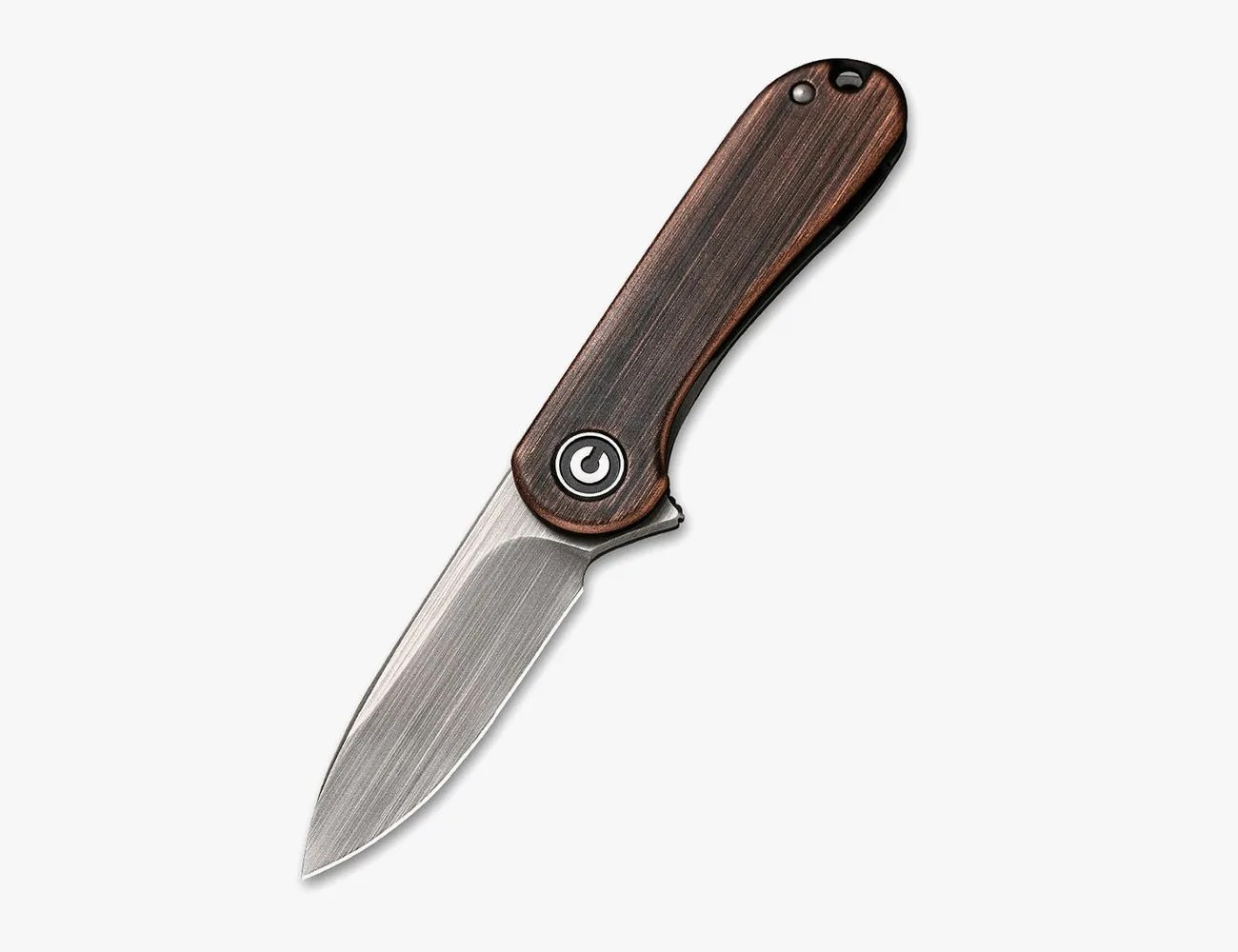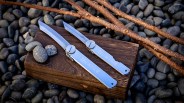Maybe you’ve experienced what we’re about to describe. Discovering a new hobby or interest, you dive in headfirst, picking up supplies, buying your first of what will become a collection of goods, and talking to other folks who are interested in your new passion.
The difference between the frame lock and the liner lock is subtle, but distinct — and, in retrospect, quite literal.
You get far enough down the road to theoretically understand the basics, when a piece of rudimentary knowledge comes up that you don’t know. You can set aside your pride and ask what may seem like a dumb question or you can fumble your way through any and all conversations on the topic for the rest of your life.
Or you can dig into things on your own and maybe even come to understand them better than the old heads do. That’s where this story comes in.
Liner Lock versus Frame Lock: What’s the Difference?
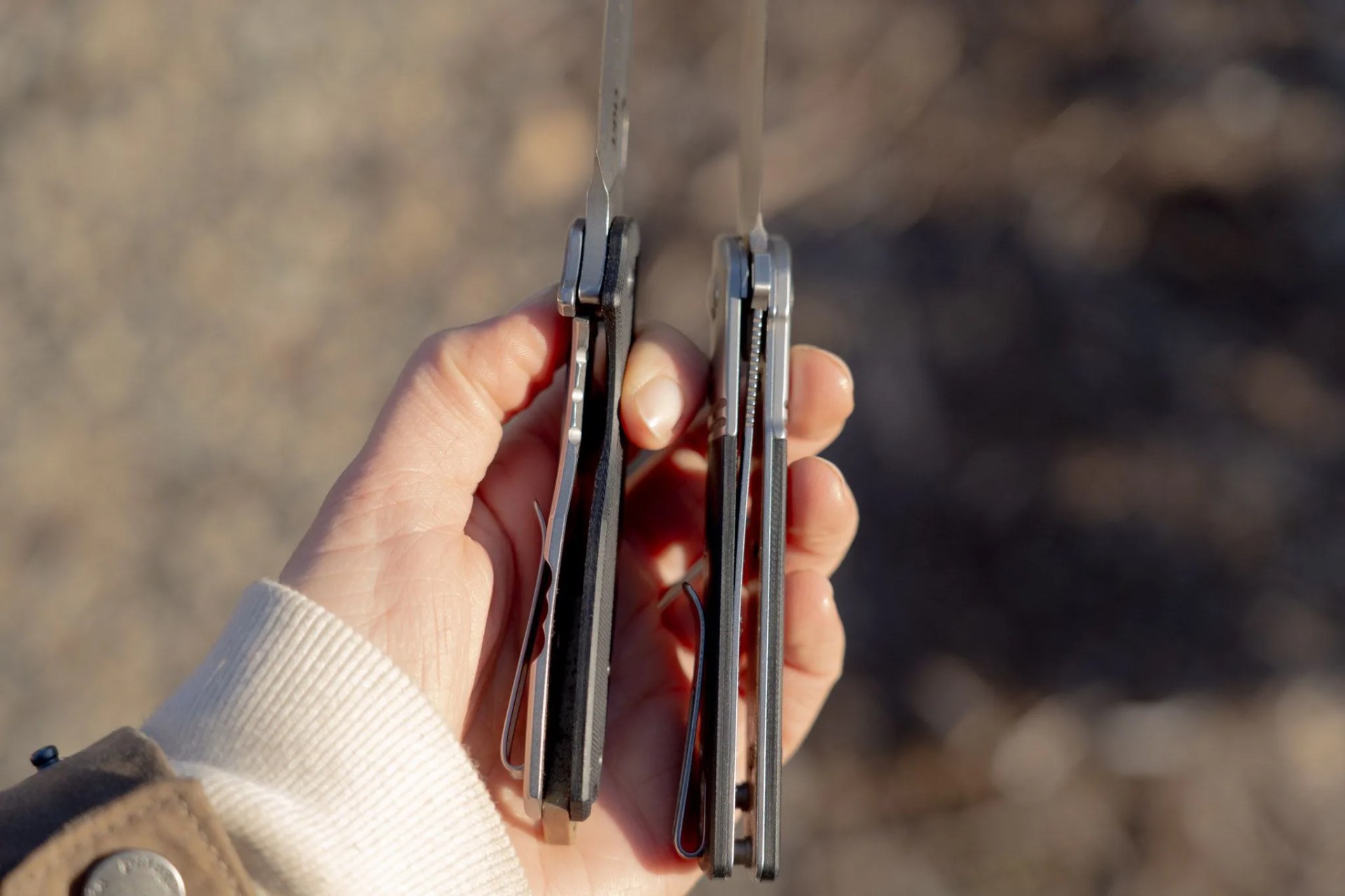
When it comes to knives and EDC, there are an almost infinite number of topics, subtopics, materials, constructions, tidbits and factoids to learn. If you missed this lesson, don’t worry: the answer is simple, and we’ve got it right here for you.
The difference between the frame lock and the liner lock is subtle, but distinct — and, in retrospect, quite literal.
